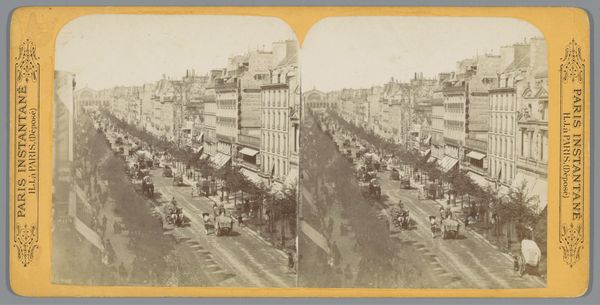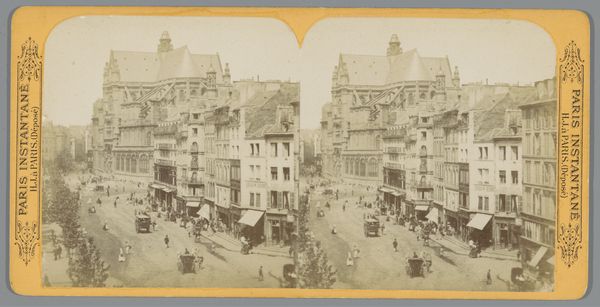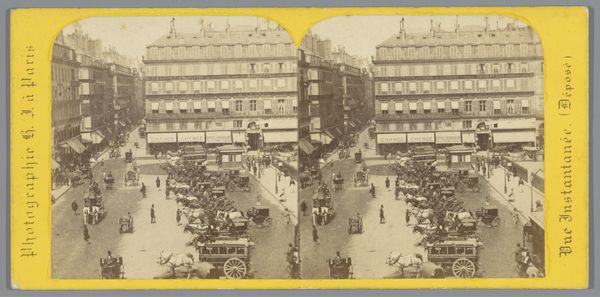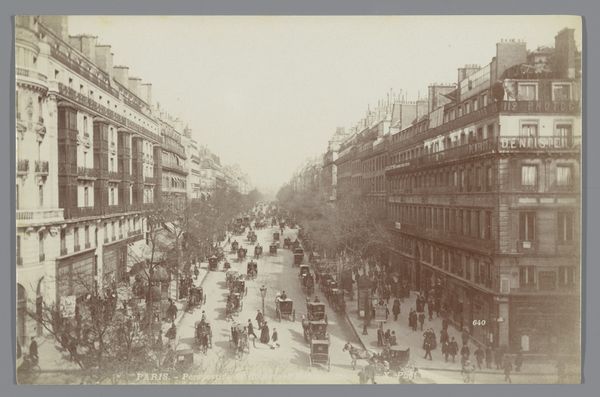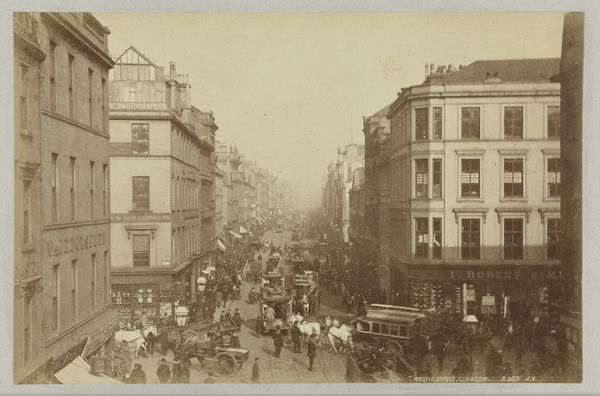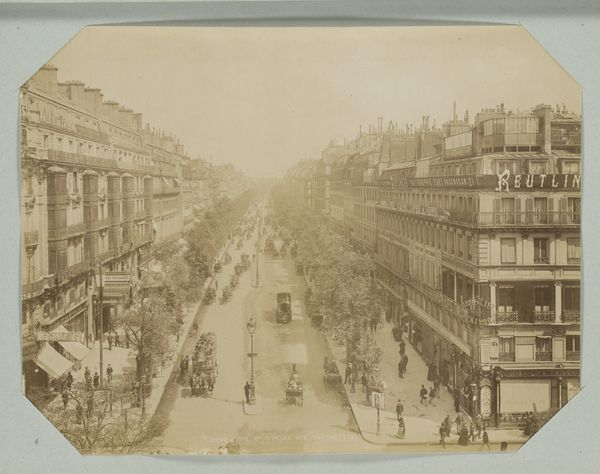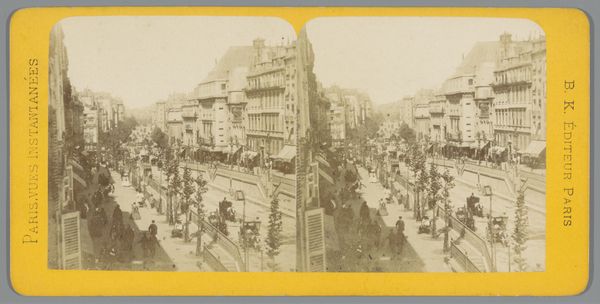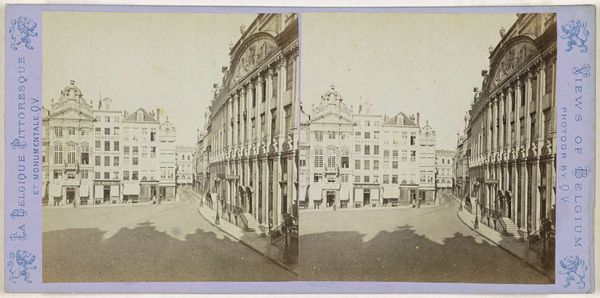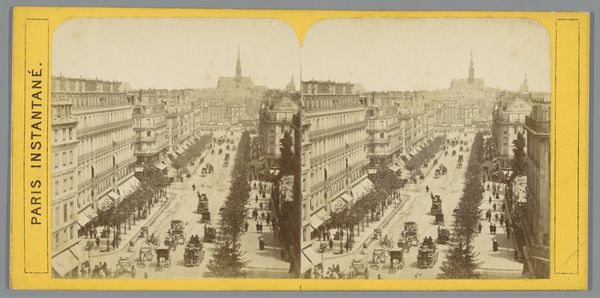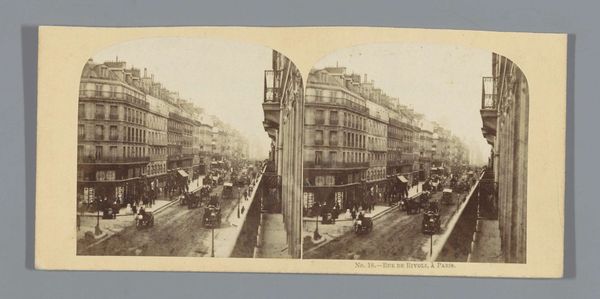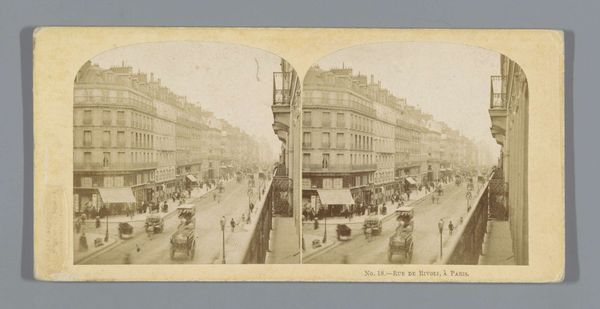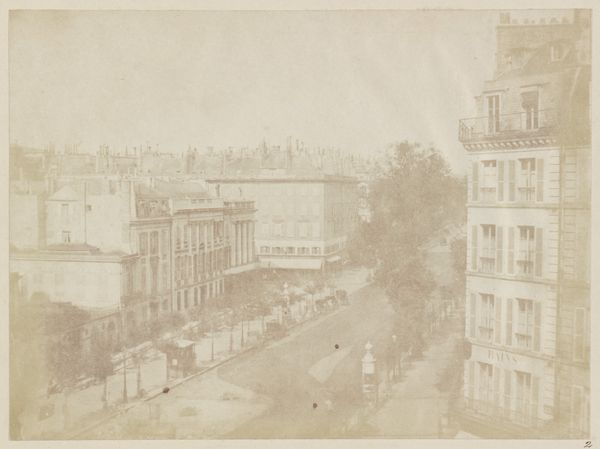
Gezicht op de Église Saint-Eustache en vermoedelijk de Rue Rambuteau in Parijs c. 1850 - 1880
0:00
0:00
print, photography
#
16_19th-century
# print
#
photography
#
cityscape
#
street
Dimensions: height 87 mm, width 178 mm
Copyright: Rijks Museum: Open Domain
Editor: Hippolyte Jouvin’s “Gezicht op de Église Saint-Eustache en vermoedelijk de Rue Rambuteau in Parijs,” created sometime between 1850 and 1880, immediately strikes me. The tonality leans towards a rather severe sepia. What are your initial thoughts? Curator: The image, with its almost academic rendering of architectural space, exhibits a pleasing arrangement. The geometric forms of the church juxtapose effectively against the horizontal flow of the street. A sophisticated study in contrasting forms. Editor: Let’s think about production. As a print made from photography, what kind of access might Jouvin have had to materials and facilities? We are entering an industrial moment in photographic reproduction. Curator: Jouvin masterfully uses perspective, positioning the Église Saint-Eustache as the focal point, dominating the scene. Note how the eye is drawn upwards, engaging with the intricate facade and spire. A brilliant manipulation of visual weight. Editor: Absolutely. Considering the labor that went into this kind of cityscape, it gives us insight into the market and means to produce and distribute these widely available images of Paris at that time. How accessible would such images have been to average people? Curator: Indeed, while appreciating the photographic document as a sign, we also appreciate the play of light and shadow, accentuating the sculptural quality of the architecture. There is almost a sublime sense of awe induced by the monumentality captured here. Editor: I appreciate that perspective. Thinking of the figures populating the street, those anonymous people buying, selling, walking, and working. They exist only because of technological advances in photographic timing that capture them in medias res, as it were. Curator: Precisely, Jouvin has captured a transient moment. The semiotic charge of this photograph relies greatly on the juxtaposition between temporality of human life and timeless architecture of Paris. Editor: Thank you. It certainly alters our appreciation when we foreground questions of social production alongside attention to formal elements like scale, form, and light. Curator: Indeed, and analyzing its aesthetic principles elevates our understanding of both context and creation.
Comments
No comments
Be the first to comment and join the conversation on the ultimate creative platform.
